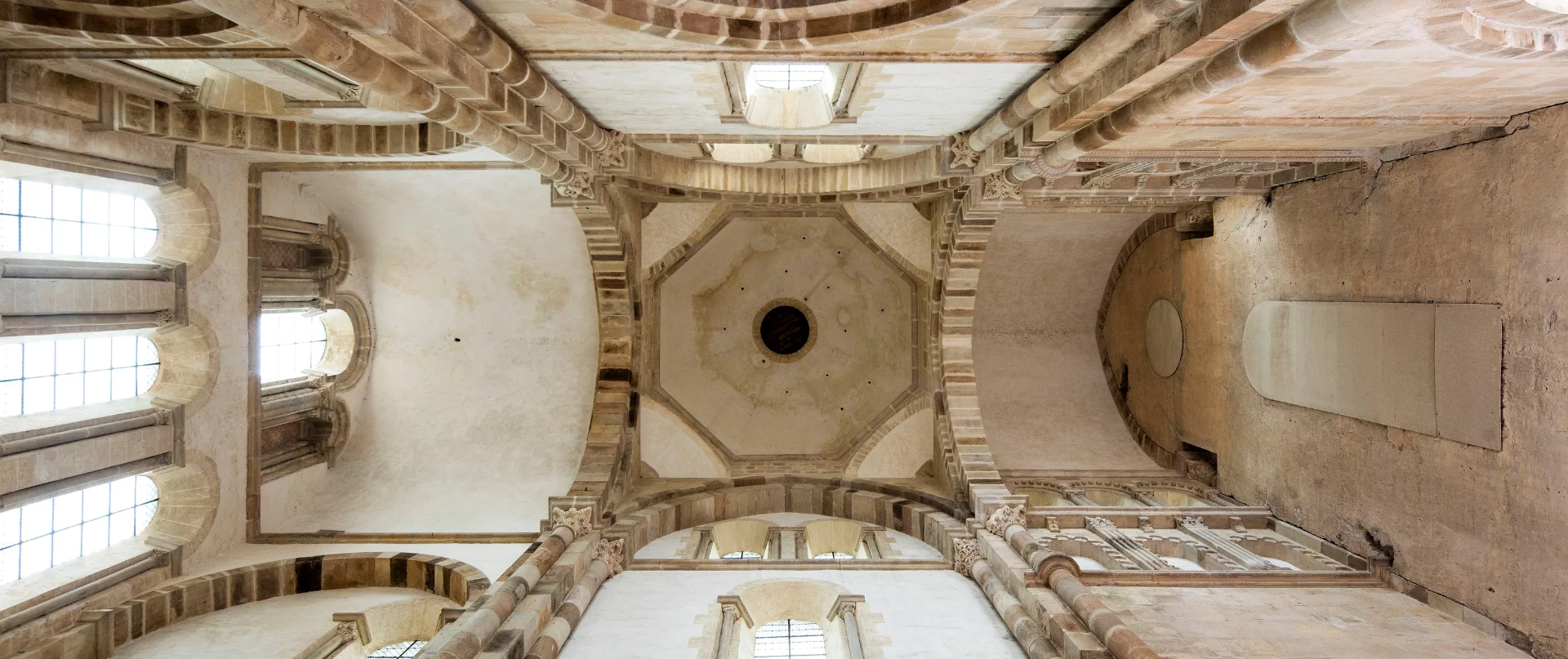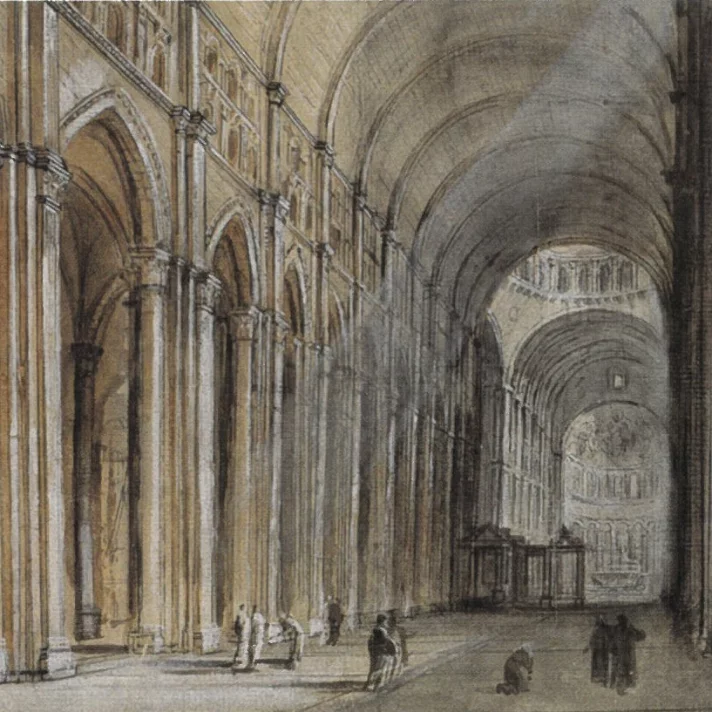Art & Architecture
article | Reading time5 min
Art & Architecture
article | Reading time5 min
The diversity of Cluny's sculptors' repertoire is considerable. Both Romanesque and Gothic art are represented at the abbey.
The first Romanesque style appeared around the beginning of the 10th century, followed by the second around the 11th century. Inside, Romanesque buildings are characterized by massive, austere architectural elements, small openings and closed arcades.
Romanesque sculptures evoke numerous biblical scenes, most often on the capitals of pillars and the tympanums of church portals.
© Centre des monuments nationaux
The Cluny sculptors ' repertoire was extremely diverse. In particular, they drew on geometric and plant vocabulary. Roses and foliage, water leaves and acanthus combine with lozenges, embossments, checkerboards and besants. and chevrons to create original compositions.
From the second half of the 12th century onwards, sculpture was progressively applied to all supports (colonnettes, lintels, etc.).
© Centre des monuments nationaux / David Bordes
The bestiary particularly fed the imagination of artists: familiar or exotic animals rub shoulders with grimacing monsters, mermaids and other chimeras. Although more discreet, human figures slowly appear.
Finally, picturesque scenes adorn the finest compositions: grape-pickers in their vineyards, knights in battle, cobblers at their stalls...
© Centre des monuments nationaux / David Bordes
Gothicart gradually impoverished this repertoire, which tightened around plant motifs. Sculpture abandoned column shafts to focus on capitals. This architectural style was developed during the second half of the Middle Ages, from the 12th to the 15th century.
It was a continuation and evolution of Romanesque techniques. Higher vaults and wider windows appeared. Churches filled with light. The art of stained glass also flourished.
© Centre des monuments nationaux / David Bordes





